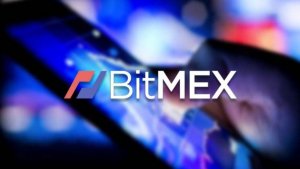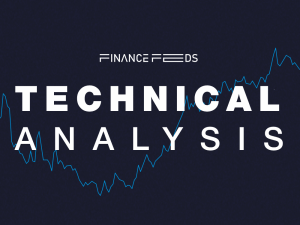Overcoming Barriers: Challenges to Implementing Global Regulation of Digital Assets
Over the course of 2023 so far, a record number of laws in the field of crypto regulation have been adopted or at least put forward for consideration across various countries.

The EU’s adoption of MiCA, the UK’s bill to regulate digital assets, and the US Court siding with Grayscale Investments to potentially pave the way for a Bitcoin ETF are among the more prominent cases we’ve seen so far.
All of this suggests that the world at large, alongside its many regulators, has stopped making attempts at ignoring the digital asset industry. This is a sensible step to take – despite the challenges that it’s been going through, this market still exceeds 1 trillion USD in capitalisation, and a number of predictions suggest that it stands to recover its positions above $2T in the upcoming month. Not only that, but the market is anticipated to go even further, potentially reaching all the way to $3 trillion by 2025. This is not something that can be ignored, nor should it be.
The only real question now is how long it will take for the regulators to develop a proper international framework that can enable the true acceptance of the digital asset industry and its integration with the global financial ecosystem.
So, what should regulators change in their approach in order to help the industry develop instead of attempting to simply shelve it?
What Is Stalling the Necessary Adjustments to Responsible Regulation?
One thing that needs to be pointed out about the ongoing efforts to regulate digital assets is the unwillingness or inability of many regulators to shift their approach. Historically, financial regulators focused on overseeing traditional banking systems, stock exchanges, and other established financial institutions. They have developed frameworks and regulations specific to these sectors based on decades of experience and understanding.
The emergence of digital or virtual assets (VAs) presents a new set of challenges and complexities that differ significantly from TradFi markets. Cryptocurrencies operate on decentralised systems, involve unique technological aspects like blockchain, and often transcend national borders. Regulators may find it challenging to adapt their existing regulatory frameworks to address these novel characteristics effectively. This lack of familiarity can create hesitation and unwillingness among regulators when it comes to formulating appropriate rules for this industry.
I believe that, instead of trying to reinvent the wheel, regulators around the world should seek to establish rules and frameworks that are consistent with those already present in traditional financial markets. Approaching things in such a manner should help facilitate an equal playing field between digital assets and traditional financial markets, where everyone gets to operate fairly and according to the same requirements. It also stands to reduce the risk of regulatory arbitrage, which is considered by many to be an unethical practice.
When companies give up on operating in particular countries and instead seek jurisdictions with more supportive regulation, it is ultimately just a shortcut which does not help the market improve itself. If anything, this practice serves to cause further harm by creating a fragmented regulatory landscape, increasing the risk of fraudulent activities, and undermining investor confidence due to inconsistent oversight and protection.
The Promise of Digital Asset Integration In Global Finance Grows Stronger
Despite the generally growing interest towards cryptocurrencies and their adoption across the world, this market still stands separate from the rest of the financial ecosystem in many ways. This is something that will need to change. Ideally speaking, this sector needs to advance enough to be able to stand on par with the stock market.
The regulatory environment in TradFi has a great advantage in terms of maturity, as it has a lot more time to develop. It has plenty of knowledge to offer to the digital asset market regarding risk management practices, safeguarding investors from scams and enabling them to make informed decisions about their finances.
The importance of TradFi literacy for the players in this industry becomes that much more apparent when we consider the increased attention that the topic of asset tokenisation is getting lately in discussions about the future of finance.
We see that traditional financial instruments like stocks and bonds can the topic of tokenisation of assets be tokenised and traded on blockchain networks. The potential of this technology in broadening investment opportunities for individuals and institutions alike is vast. It is very likely that tokenised assets are the future that awaits us because, with many big tech names like Microsoft, IBM, Tencent, and others adopting blockchain, this technology is firmly headed towards mainstream adoption.
The Promise of a Bright Future: The Intersection of Crypto and TradFi Demands a Unified Book of Rules
If TradFi and digital assets are truly to merge at some point in the future, having a unified set of rules will be paramount, and it is the responsibility of all market participants to make sure it can happen.
In order to achieve greater financial innovation, regulators and business owners have to learn to work together to improve their mutual awareness, both in terms of traditional financial education and the additional knowledge necessary to deal with the nuances of decentralised finance. This will be the true cornerstone of standardised digital asset regulation on a global scale.
By Valentina Drofa, Financial market consultant
 Valentina Drofa is an international entrepreneur and business leader with over 15 years of working in the financial market. She is a financial market consultant with a PhD in Economics and author of a few books on financial literacy. In 2011 she co-founded the consulting firm for finance and fintech brands Drofa Comms.
Valentina Drofa is an international entrepreneur and business leader with over 15 years of working in the financial market. She is a financial market consultant with a PhD in Economics and author of a few books on financial literacy. In 2011 she co-founded the consulting firm for finance and fintech brands Drofa Comms.









